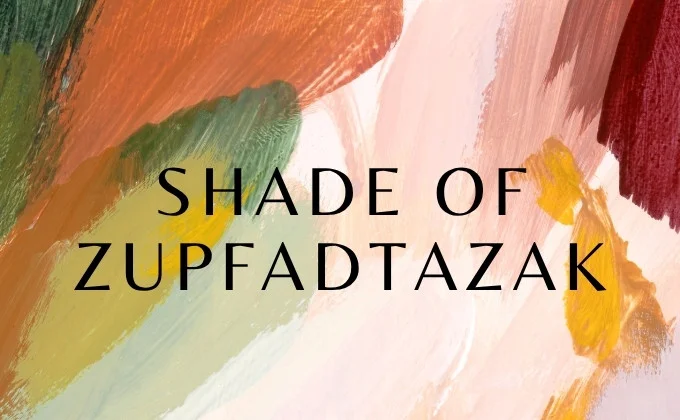Introduction to Zupfadtazak
The term “zupfadtazak” represents a unique concept rooted in rich historical and cultural contexts. Its origin can be traced back to various traditions where the term is imbued with specific meanings that reflect the beliefs and practices of those cultures. Understanding zupfadtazak requires an exploration into its etymology, which reveals nuances that contribute to its significance in both historical and modern discussions. In many cultures, zupfadtazak is not merely a word; it embodies a set of values and social frameworks that influence the behavior and interaction within communities.
Historically, zupfadtazak has been associated with certain rituals or practices that were considered vital in the fabric of society. These aspects contribute to its relevance today, as various interpretations and adaptations of zupfadtazak highlight the ongoing transformation of cultural identities. The concept often evokes discussions surrounding rites of passage, communal gatherings, and even philosophical inquiries into existence and purpose, showing its versatility across different settings.
In a contemporary context, as globalization intermingles diverse cultural narratives, zupfadtazak emerges as a topic of discussion that encapsulates the intersection of past and present. Researchers and cultural enthusiasts are exploring the implications of zupfadtazak in today’s societies, questioning how ancient traditions can inform modern practices. The relevance of zupfadtazak extends beyond mere academic interest; it prompts further exploration into how similar concepts shape our understanding of human interactions and social constructs.
By delving deeper into zupfadtazak, one can appreciate its layers of meaning and the cultural significance it holds. This exploration sets the foundation for more comprehensive discussions on its impact, as both a historical artifact and a living concept within contemporary dialogue.
The Role of Zupfadtazak in Modern Contexts
In contemporary society, zupfadtazak serves as a multifaceted concept that extends across various fields, including art, literature, and technology. Its significance is underscored by the way it addresses current issues and reflects societal values, thereby fostering a deeper understanding of modern challenges. This term, once confined to niche circles, has emerged into broader discussions, indicating its relevance in today’s dialogues.
In the realm of art, zupfadtazak is often explored as a thematic element that reflects the complexities of identity, culture, and human experience. Artists utilize this concept to provoke thought and challenge perceptions, creating works that resonate with audiences who seek meaning in a transient world. Recent trends indicate that this artistic engagement with zupfadtazak not only invokes emotional responses but also stimulates critical conversations about societal norms and values. The creativity surrounding this concept has led to a resurgence of interest in how art can influence social change and encourage self-reflection.
Literature, too, harnesses the power of zupfadtazak to express intricate narratives that mirror the collective consciousness of society. Writers increasingly incorporate this concept into their works, employing it to critique cultural practices or highlight historical injustices. Through this medium, zupfadtazak facilitates a dialogue that remains pertinent to contemporary issues, allowing readers to navigate the complexities of their own realities while promoting empathy and understanding across diverse communities.
Additionally, in the field of technology, zupfadtazak is contributing to innovations that aim to enhance communication and connectivity. As our reliance on technology grows, so does the importance of integrating principles tied to zupfadtazak, ensuring that advancements serve to uplift and enrich human experiences rather than detract from them. Therefore, the multifarious applications of zupfadtazak in modern contexts exemplify its pivotal role in shaping a reflective, progressive society.

Debunking Myths Surrounding Zupfadtazak
Throughout the years, Zupfadtazak has been the subject of numerous myths and misconceptions that have obscured its true nature and significance. One prevalent myth is that Zupfadtazak is primarily associated with negative connotations, often being regarded as something sinister or malevolent. This perspective, however, lacks a solid foundation in factual evidence. In reality, experts suggest that Zupfadtazak encompasses a broader spectrum of meanings, many of which are rooted in cultural practices aimed at fostering community and understanding.
Another common misconception involves the belief that Zupfadtazak is a lost or forgotten tradition, only to be revived by modern enthusiasts. Contrary to this view, several scholars argue that Zupfadtazak has remained alive through generations, albeit in varying forms and interpretations. Contemporary practices, which may differ from historical iterations, still retain core elements of the original concepts, illustrating the adaptability and resilience of Zupfadtazak within cultural contexts.
Furthermore, it is often posited that engagement with Zupfadtazak is limited to certain demographics or communities. This restrictive view overlooks the increasing interest and participation from diverse groups, reflecting a universal appeal. For instance, workshops and seminars on Zupfadtazak are being organized in various regions, attracting individuals from different backgrounds eager to explore its nature and significance. This growing engagement emphasizes that Zupfadtazak is not a relic of the past but a dynamic entity capable of evolving and resonating with contemporary society.
In light of these clarifications, it is crucial to approach Zupfadtazak with an open mind, seeking to understand its complexities rather than relying on outdated stereotypes. The insights provided by experts in the field serve as valuable tools for dispelling these myths, thereby paving the way for a more accurate and nuanced appreciation of Zupfadtazak’s role in our cultural landscape.
Future Perspectives on Zupfadtazak
The future of zupfadtazak holds significant promise, presenting opportunities for innovation and advancements across various sectors. As technology continues to evolve, the implications of zupfadtazak frameworks may extend to multiple industries, driving efficiency and enhancing connectivity. Implementing advanced algorithms and machine learning techniques could lead to more sophisticated applications of zupfadtazak, ideally adapting to consumer needs and preferences in real-time.
One of the primary areas where zupfadtazak is expected to make a substantial impact is in data management and analysis. With the growing prevalence of data-driven decision-making in business, the ability to integrate zupfadtazak into existing systems may provide organizations with invaluable insights. This could facilitate improved operational performance and strategy development, further solidifying zupfadtazak’s role in shaping industry standards.
Moreover, as community engagement becomes increasingly pivotal, zupfadtazak may offer unique platforms for collaborative efforts. This is particularly relevant in areas such as environmental sustainability, where communities can leverage zupfadtazak to monitor ecological changes, optimize resource usage, and promote awareness. By fostering a sense of shared responsibility, zupfadtazak can help empower individuals and local groups to contribute meaningfully to larger societal challenges.
In the realm of education, the future of zupfadtazak could encourage knowledge sharing and skill development. As institutions adopt zupfadtazak-driven tools, students may benefit from enhanced learning experiences that encourage critical thinking and creativity. The ability to engage with zupfadtazak in educational settings could thus prepare future generations to navigate a technology-driven world adeptly.
In conclusion, the trajectory of zupfadtazak appears to be one of growth and adaptation. By embracing emerging trends and engaging with this evolving framework, individuals and communities alike can ensure they remain at the forefront of innovation and societal progress.

Leave a Reply